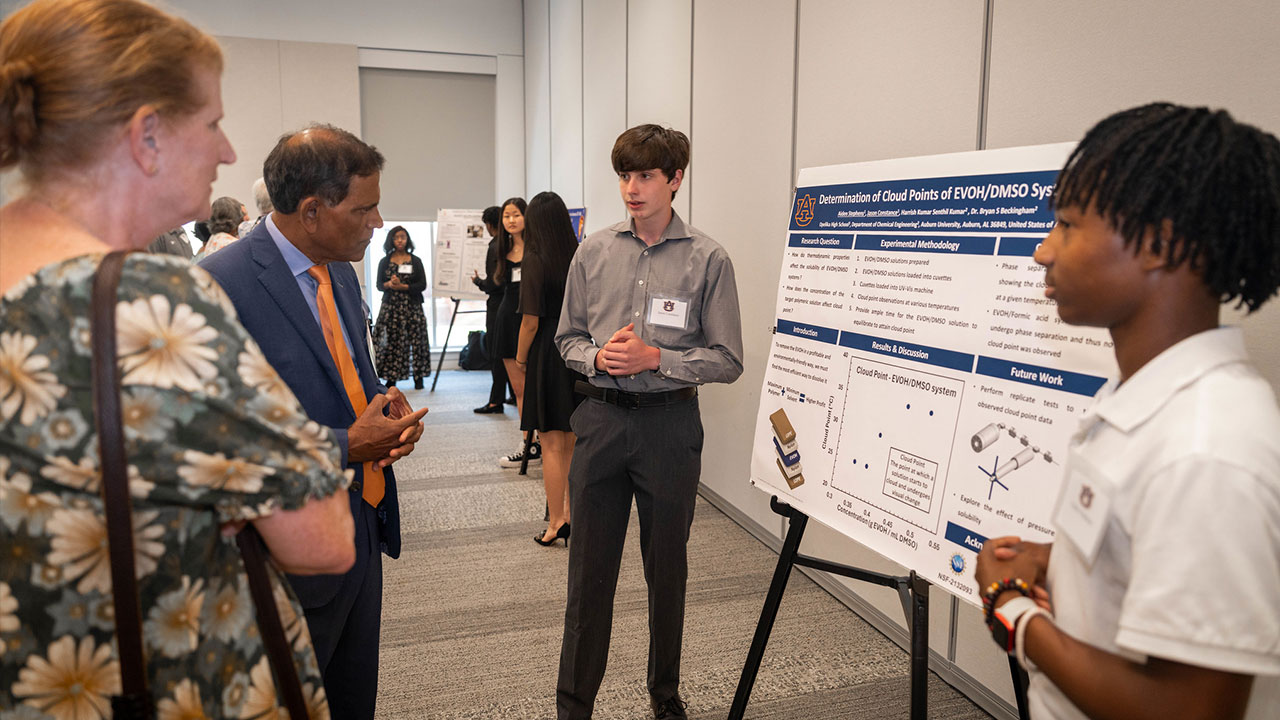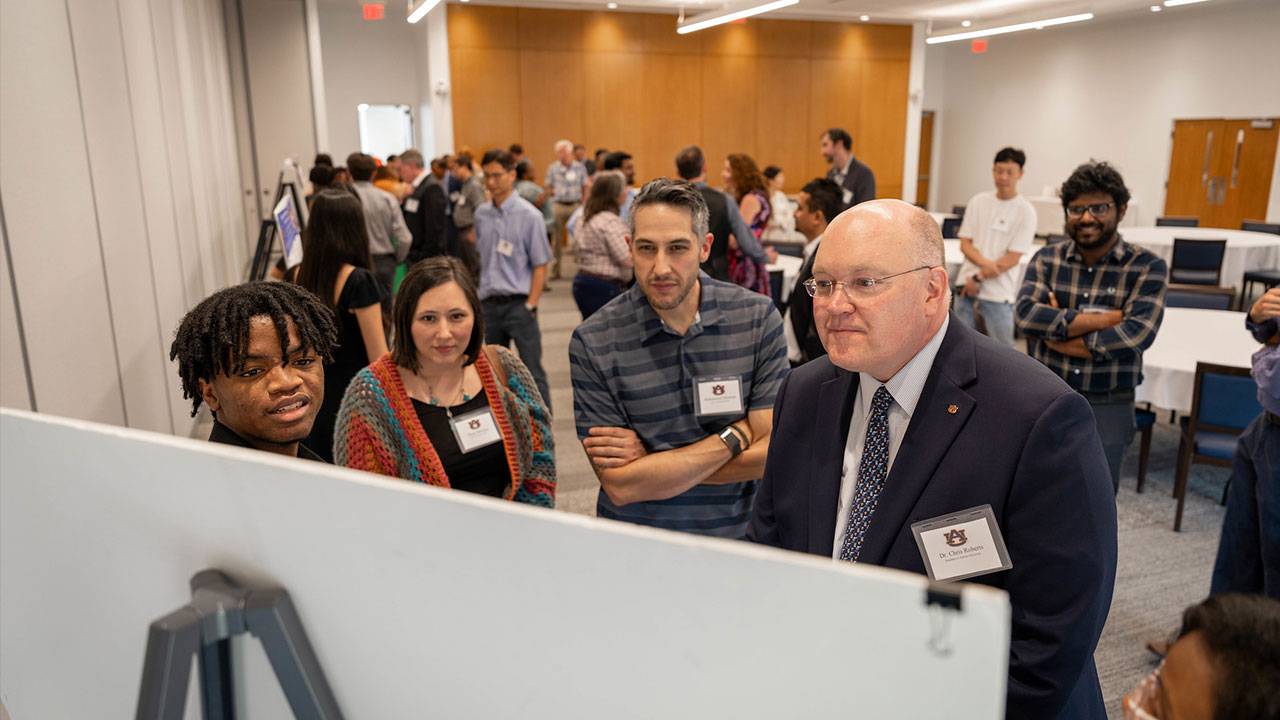content body

Opelika High’s Jason Constance and Aiden Stephens were among 10 area high school students who spent 10 weeks during the summer conducting research with faculty on campus.
STEM may stand for Science, Technology, Engineering and Mathematics, but at Auburn University, it covers so much more.
Sure, STEM courses and majors are part of the Samuel Ginn College of Engineering and the College of Sciences and Mathematics (COSAM), but there is at least one STEM major in each of the 12 colleges on the Plains, like agriculture, business and construction.
Because of this, Auburn awards more STEM degrees than any other Alabama university.
A significant factor in this growth and accomplishment is the work of Virginia Davis, the Daniel F. and Josephine Breeden Professor in the Department of Chemical Engineering, and Mary Lou Ewald, director of COSAM Outreach.
The pair have been collaborating on STEM outreach, workforce development and educational research for nearly 20 years. Alabama Gov. Kay Ivey recognized their collective work in 2020 by appointing them as inaugural members of the Alabama STEM Council, where they each led a working group of K-12 and university educators, government employees, industry stakeholders and representatives from STEM education non-profit organizations.
“A key focus of the council has been spreading the word that STEM is more than just a few school subjects,” said Davis. “In fact, it’s everywhere and many jobs require STEM skills.”
Their work with the council sparked the creation of what is now the I-STEM Connectory, a new center at Auburn set to foster the transdisciplinary STEM ecosystem on campus to promote pressing societal needs for health, food, water, infrastructure and well-being among K-12 programs and experiences.
Such work has been supported by intermural and extramural funding, including from the council.
A key example of their effort to connect people and disciplines in STEM education is Project FARM (Fostering Agricultural Research and Mentoring).
With funding from the USDA/National Institute of Food and Agriculture, Davis, Ewald and colleagues in COSAM, College of Agriculture and the Alabama Cooperative Extension System are guiding 14 science teachers from Pike and Elmore counties toward integrating agricultural activities into curricula and science fairs with a special focus on food supply, water and forestry.
Another project under I-STEM is the Alabama Science and Engineering Fair and STEM Expo, which welcomes Alabama middle and high school students vying for prizes with their science skills. Top winners go on to compete at the International Science and Engineering Fair.
“We wanted every student from every school to have a chance to learn how to ask and answer questions about their world through science fair participation,” said Ewald. “Along with collaborators and external funding, we’ve grown the fair to over 200 students from 35 schools.
“This growth, coupled with a teacher mentoring program we developed and the scholarly articles we published on the positive impacts science fair projects can have on student self-esteem and STEM career interests, Auburn has hosted the fair and expo twice.”
The event demonstrates Auburn as Alabama’s leader in STEM education, no matter the discipline. It’s also a way to highlight campus facilities, research, students and faculty to future students.

Auburn President Christopher B. Roberts, a chemical engineer by trade, was one of the special guests to review the research conducted by area high school students this summer.
Davis was also part of the team that hosted 10 area high school students this summer as part of a prestigious research and mentoring grant from the National Science Foundation. The students spent 10 weeks conducting research with Auburn faculty in engineering, agriculture or the College of Forestry, Wildlife and Environment.
Opelika High’s Jason Constance and Aiden Stephens were among this year’s participants. They were challenged to develop a way to recycle all the components in multilayer plastic packaging.
Auburn President Christopher B. Roberts, a chemical engineer by trade, visited with each research team when students presented their findings to faculty and their parents. Roberts was ecstatic to see the student work, especially those who used a reactor he developed to recycle food packaging.
Opelika engineering and robotics teacher Brenda Howell encourages all her students to participate in the summer camp, especially those with the right aptitude.
“It gives our students an opportunity to experience research under a professor and graduate students,” she said. “It doesn’t matter if they have an interest in engineering or math, they will learn skills that will help them in whatever they do.”
“If people can see that STEM impacts their world, they’re more likely to be engaged in it,” added Davis.




